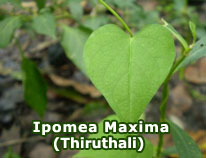
Atreya Acharya was the teacher of Agnivesh or Jeevaka (Jivaka) who was the physician of Lord Buddha. Atreya had Ayurvedic education under Bharadwaja. His original name was Punarvasu. Atreya means the son of Atri. Atri, the sage is believed to live in India between 8th and 6th century BC. Atreya Samhita, a collection of 46,500 verses on Ayurvedic concepts is his work.
He is the first to describe six tastes – sweet, astringent, bitter, sour, salty and pungent are the six tastes that humans experience. Each taste has specific effect on human body and characteristics.
He classifies diseases as curable and incurable. He also directs the practitioners to choose the patients to attend and not to.
He is the first to give a detailed description of diseases, its causes, and cures. Atreya has also classified poisons and toxic substances.
The cornerstone tridosha concept of Ayurveda is also a contribution of Atreya Acharya. Charaka, Sushruta, Vagbhata and other ancient Ayurveda practitioners got the basics from Atreya Acharya.
Although no one can give an accurate picture of the origin of Ayurveda as a life science, the oldest available records of this complete science of life and medicine runs to and ends at Atreya Acharya.













 Loading ...
Loading ...





